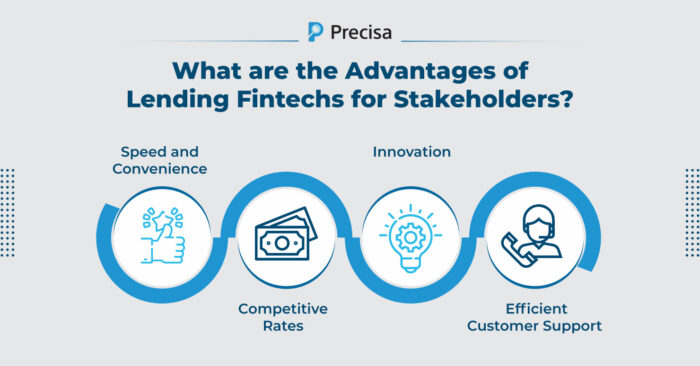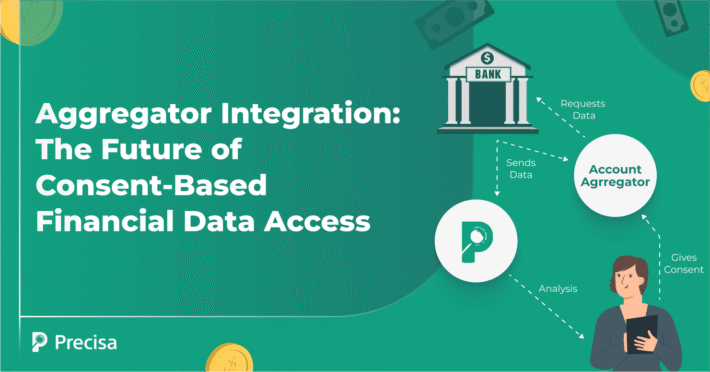From Traditional to Trendsetting: Why Lending Fintechs are the New Face of Borrowing

Borrowing is evolving as fintechs in India usher in a new era, shifting away from traditional banking methods. The digital lending market, valued at $43.16 billion in 2018, is projected to skyrocket to $567.3 billion by 2026, boasting a remarkable CAGR of 26.6%. Interestingly, lending fintechs companies are at the forefront of this change, reshaping access to loans and credit while challenging established norms.
Over the past decade, these innovative startups have harnessed technology to offer diverse lending solutions, from personal loans to small business financing, surpassing traditional banks in accessibility and convenience.
This article explores how lending fintechs revolutionise borrowing, comparing them to traditional lending and highlighting their advantages. It discusses fintech lending’s digital transformation of borrowing, its impact, and future trends as the new face of borrowing.
Lending Fintech vs. Traditional Lending: Bridging the Borrowing Gap
Fintech lending and traditional lending represent two distinct approaches to meeting borrowers’ financial needs. Fintech lending leverages technology and data analytics to streamline lending, offering borrowers quicker access to funds and more personalised loan terms.
Firstly, fintech lending often serves underserved or thin-file borrowers who face challenges securing loans through conventional channels. Secondly, these platforms rely on alternative data sources to evaluate creditworthiness, reducing dependence on traditional credit scores.
On the other hand, traditional lending, typically provided by banks and credit unions, adheres to conventional underwriting methods and regulatory frameworks. While considered more secure, it can be slower and less inclusive, potentially leaving some individuals without credit access.
Lastly, fintech lending’s agility and inclusivity are narrowing the borrowing gap, presenting alternatives to traditional lenders. However, it’s essential to strike a balance between innovation and regulatory safeguards to ensure borrowers’ and lenders’ interests are protected in this evolving financial landscape.
What are the Advantages of Lending Fintechs for Stakeholders?
Innovative lending fintechs and online lending platforms have gained traction recently, offering several benefits for borrowers and investors, making them an appealing alternative to traditional banks. Here are some key advantages:
1. Speed and Convenience
Lending fintechs have mastered the art of convenience. With their user-friendly interfaces and streamlined processes, borrowers can apply for loans, upload documents, and receive funds without leaving their homes. This convenience is especially appealing in a world where time is of the essence.
2. Competitive Rates
Fintechs are known for their competitive interest rates. Their lean operational models and reduced overhead costs allow them to pass on the savings to borrowers in the form of lower rates.
3. Innovation
Lending fintechs continually innovate to meet customer needs. They frequently introduce new products and features, such as peer-to-peer lending, microloans, and point-of-sale financing, keeping their offerings fresh and relevant.
4. Efficient Customer Support
Fintech companies often provide responsive customer support through online chat, email, or phone, making it easier for borrowers and investors to seek assistance and resolve queries.
What is the Process of Lending Fintech to be Helpful in Borrowing?
The process of fintech lending is designed to help borrow by simplifying and streamlining traditional lending practices. Here’s a simplified step-by-step explanation:
1. Online Platform
Fintech lending operates through online platforms or websites. These platforms serve as intermediaries, bringing together borrowers and lenders. Borrowers seeking loans and investors looking to lend their money register on the platform.
2. Borrower Application
Individuals or businesses in need of financing start by creating an account on the fintech lending platform. They provide personal, financial, and sometimes business-related information. This data is used to assess their creditworthiness and determine the terms of the loan.
3. Credit Evaluation
Fintech lenders use sophisticated algorithms and data analysis to evaluate the creditworthiness of borrowers. This process may consider traditional credit scores but often includes alternative data sources such as employment history, income, and even social media activity.
4. Loan Listing
Once a borrower’s creditworthiness is assessed, their loan request is listed on the platform. The listing includes details about the borrower, the purpose of the loan, the requested amount, and the interest rate.
5. Investor Participation
On the other side of the platform, investors review the loan listings and decide which loans they want to fund. They can choose to invest in a single loan or spread their investment across multiple loans to diversify their risk.
6. Funding and Loan Origination
When enough investors commit to funding a loan, the loan is considered fully funded. The platform facilitates the transfer of funds from investors to the borrower. The borrower receives the loan amount in their bank account.
In this way, fintech transforms lending using real-time data and automation for efficient, inclusive, and risk-managed credit access.
What is the impact of Lending Fintech on digital lending?
Fintech companies are revolutionising digital lending by leveraging various parameters and innovations to streamline and enhance the lending process. These parameters include
- Data Analytics and AI: Fintech uses AI and data analytics to assess creditworthiness by analysing various data, including credit scores, social media, and transaction history.
- Automation: Automation reduces time and costs by streamlining loan origination, documentation, and approval processes.
- Blockchain Technology: Blockchain ensures secure and transparent loan transactions, reducing fraud and eliminating intermediaries in cross-border lending.
- Mobile Accessibility: Fintech offers mobile apps for convenient loan applications, tracking, and payments via smartphones.
- Digital Identity Verification: Streamlined digital identity verification, often using biometrics and government IDs, enhances security and simplifies borrower onboarding.
Future Trends in Lending Fintechs as the New Face of Borrowing
The ascent of lending fintechs as the future of credit isn’t a fleeting trend; it represents a fundamental shift. As technology advances and consumer preferences change, key trends will further shape this landscape:
1. Enhanced Data Analytics
Fintechs will refine data analytics using alternative sources and machine learning for improved credit risk assessment, benefiting both borrowers and investors.
2. Global Expansion
Many fintechs will expand globally, tapping into new markets with cross-border lending and international peer-to-peer networks.
3. Evolving Regulatory Landscape
Regulations governing fintech lending, risk management, and data security will become more comprehensive, with compliance a top priority.
4. Continuous Focus on User Experience
User-friendly interfaces, chatbots, and AI-powered customer support will enhance the borrower experience and build trust.
Final Thoughts
Lending fintechs have revolutionised borrowing with speed, accessibility, competitive rates, and innovation, making them the preferred choice for borrowers globally. They are reshaping the future of lending, offering an inclusive and technologically advanced experience. Whether you’re an individual seeking a personal loan or a small business in need of financing, lending fintechs are leading the way towards a more convenient financial future.
Firms must adopt advanced technology software to compete effectively and extensively use the power of digital lending. Precisa’s cloud-based solution can help, as it seamlessly integrates with existing tech stack and various platforms, providing precise bank statement analysis for credit evaluations.
It also offers GSTR analysis and Account Aggregator integration, ensuring secure data sharing and real-time fraud risk reduction. Precisa empowers NBFCs for enhanced user experiences and is trusted by top Fintech players for cutting-edge financial solutions.
Book a free demo to discover more.




